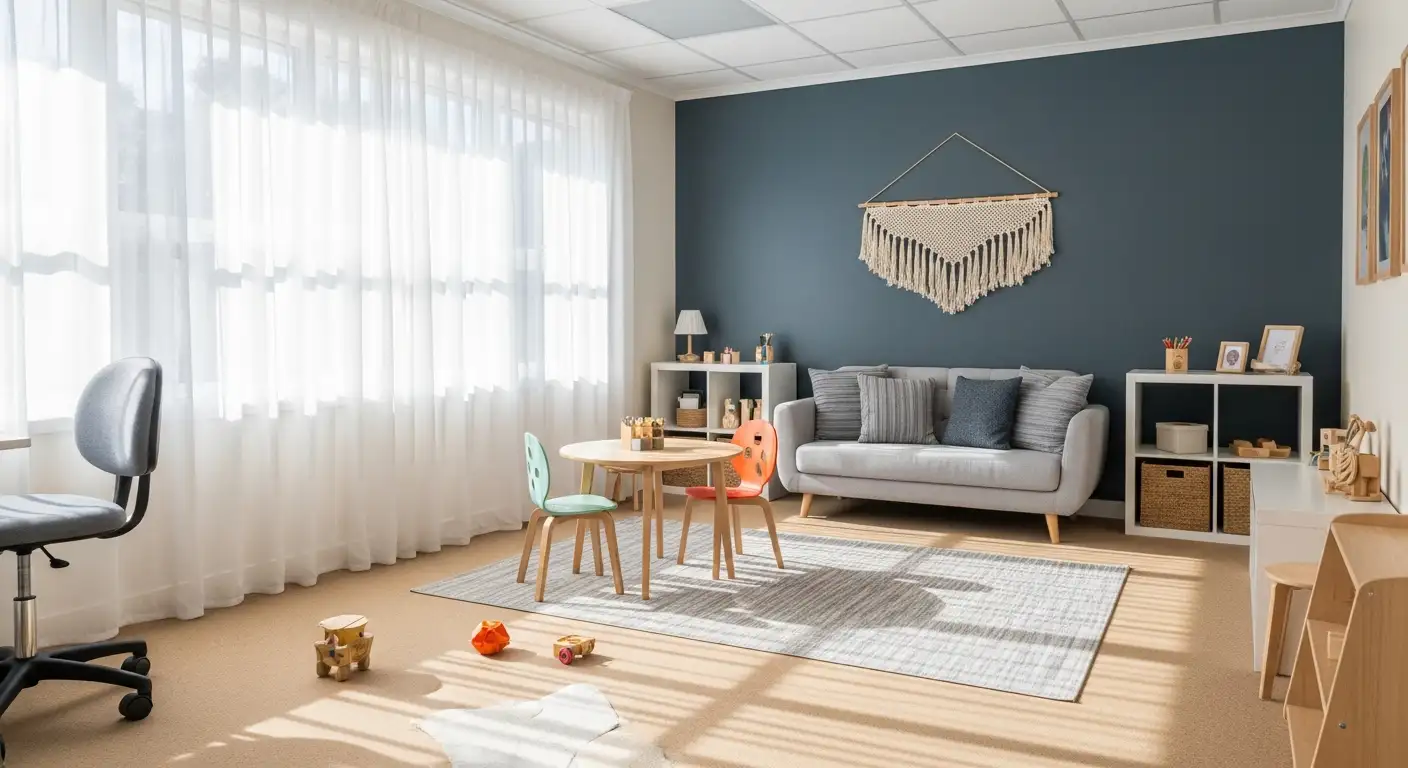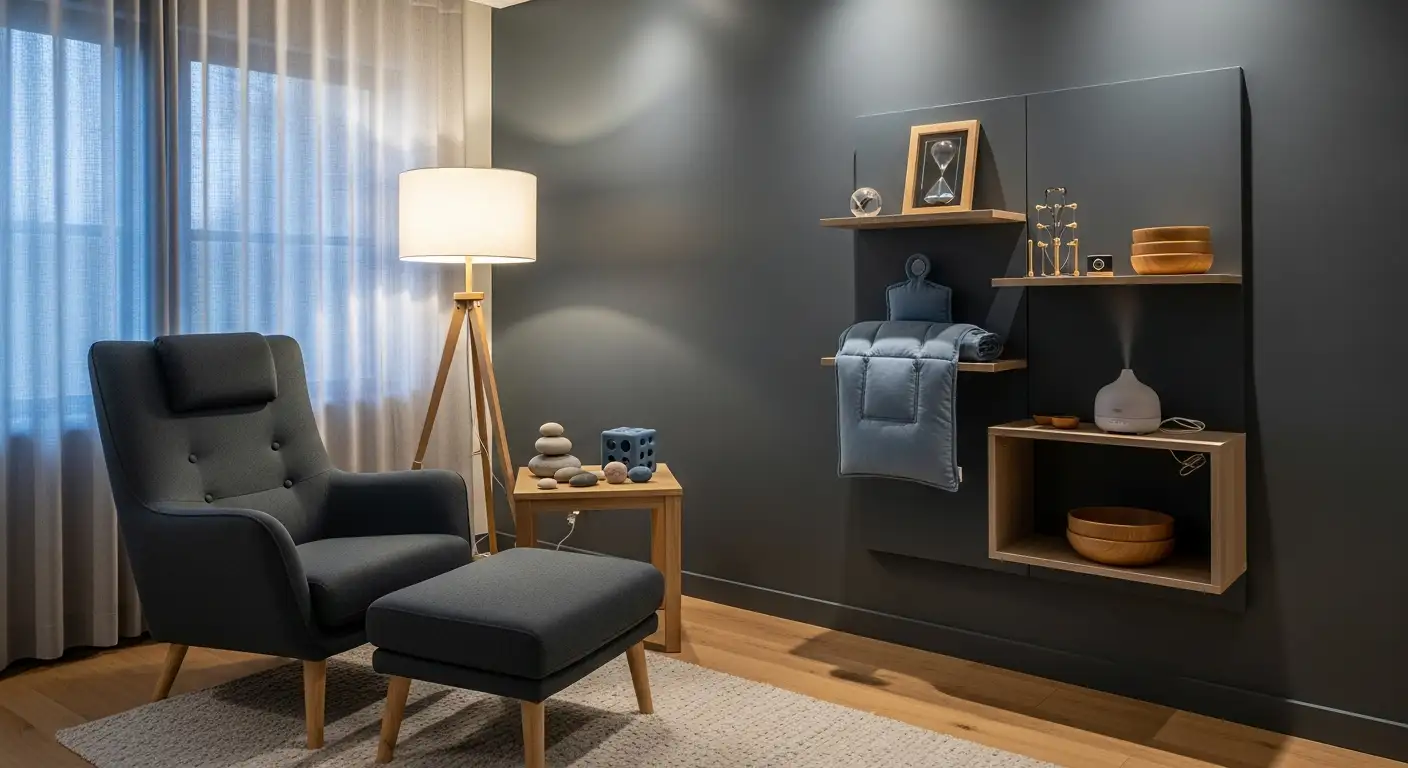Unlocking Potential Through Assistive Technologies and Strategies
Effective communication is fundamental to social participation, independence, and quality of life for individuals with autism spectrum disorder (ASD). While challenges vary widely across the spectrum—especially among nonverbal or minimally verbal children—a rich array of tools, devices, and evidence-based strategies can make a meaningful difference. This article explores the main types of communication aids, the role of augmentative and alternative communication (AAC), how to select suitable tools, and the resources available to support families, educators, and caregivers on this journey toward improved interaction.
Main Types of Communication Aids and Devices for Autistic Individuals
What are the main types of communication aids and devices used for autistic individuals?
Communication supports for autistic children and adults vary widely, with tools and devices tailored to individual needs and abilities. These aids are generally categorized into three levels: low-tech, mid-tech, and high-tech solutions.
Low-tech tools
Low-tech communication aids are simple, cost-effective, and easy to implement. They include visual supports such as communication boards, picture exchange systems like PECS (Picture Exchange Communication System), visual schedules, social stories, and tactile objects. For example, children can use picture cards or Velcro boards to point at images and express their desires or needs. These tools are valuable for developing basic communication skills, expressing preferences, and understanding routines.
Mid-tech devices
Mid-tech devices bridge the gap between low- and high-tech tools. They often involve electronic devices with pre-set features, such as speech output buttons or devices loaded with speech or social skills programs. Tablets equipped with specialized apps—like speech-generating apps or social stories—are common examples. These devices can vocalize words, phrases, or sentences, making them versatile for various communication contexts. They also support learning through multimedia content, supporting children and adults who can type or select images to communicate.
High-tech options
High-tech communication devices are sophisticated systems that often include customizable speech-generating devices (SGDs), eye-gaze systems, or advanced software. These can be tablet-based or dedicated electronic devices with comprehensive features such as symbol-based interfaces, text-to-speech capabilities, and even AI-assisted communication. Eye-gaze systems allow users to select options using their gaze, facilitating communication for individuals with limited motor control. These advanced tools are often used in clinical settings and can significantly improve self-expression, social interaction, and independence.
| Level | Examples | Functionality | Benefits |
|---|---|---|---|
| Low-tech | Communication boards, PECS, visual schedules | Pointing, visual recognition, simple exchanges | Cost-effective, easy to learn, supports basic communication |
| Mid-tech | Tablets with communication apps, speech buttons | Vocalize messages, multimedia learning | Flexible, portable, supports complex sentences |
| High-tech | Speech-generating devices, eye-gaze systems | Generate speech, assist with motor limitations | Personalized, supports extensive vocabulary, adaptable |
Choosing the right communication aid involves evaluating the individual's motor skills, cognitive level, and communication needs. Speech-language pathologists and other specialists can guide families and educators in selecting appropriate tools and facilitating effective use.
Understanding Augmentative and Alternative Communication (AAC) in Autism Support

What is Augmentative and Alternative Communication (AAC) and how is it used for autism support?
Augmentative and Alternative Communication (AAC) is a collective term for a variety of tools and methods designed to help individuals with speech or language difficulties communicate more effectively. This includes children and adults with autism who may be nonverbal or have limited speech. AAC methods are highly adaptable, supporting communication across different environments and situations.
The approaches range from simple, no-tech solutions to advanced electronic devices. No-tech methods include gestures, facial expressions, and body language, which are natural forms of communication. Low-tech options feature communication boards and picture exchange systems like PECS, which use images and symbols that children can point to or carry around.
High-tech solutions utilize electronic devices such as speech-generating devices (SGDs), tablets, and smartphone apps that vocalize words or sentences when symbols or text are selected. These devices can be customized to match the user’s skills, preferences, and developmental level.
AAC plays a crucial role in supporting individuals with autism by fostering independence, encouraging social interactions, and enabling children to express their needs, wants, and emotions. It helps reduce frustration caused by communication barriers and minimizes social isolation.
Speech-language pathologists (SLPs) are integral to the effective use of AAC. They evaluate each individual's communication abilities, select suitable tools, and provide training to users and their communication partners—like family members, teachers, and therapists. This training ensures that everyone involved understands how to support and maximize the benefits of AAC.
Overall, AAC enhances not only communication but also emotional well-being and social participation for autistic individuals, helping them to lead more connected and autonomous lives.
No-tech to high-tech AAC methods
| Method Type | Examples | Description |
|---|---|---|
| No-tech | Gestures, facial expressions, body language | Natural, simple communication forms requiring no devices. |
| Low-tech | Communication boards, picture cards (e.g., PECS), symbol systems | Visual aids that can be hand-held or posted for pointing and choosing. |
| Mid-tech | Speech output devices with preset messages | Devices like talkers that can store and play specific phrases; easier to use than high-tech solutions |
| High-tech | Tablets and communication apps with speech synthesis | Advanced electronic solutions allowing personalized, flexible communication options. |
The role of speech-language pathologists
Speech-language pathologists (SLPs) are essential team members in autism support involving AAC. They conduct comprehensive assessments to understand each individual's speech, language, and cognitive skills. Based on these evaluations, SLPs recommend the most suitable AAC tools—be it low-tech or high-tech—and tailor these tools to meet the child’s current abilities.
SLPs provide training to children, caregivers, and educators on how to use AAC systems effectively. They also monitor progress and adjust communication strategies as the child develops. Their expertise ensures that the choice of AAC complements the child’s learning style, motor skills, and sensory preferences.
By guiding families and professionals in implementing these tools, SLPs help promote meaningful communication, reduce frustration, and foster social engagement, which are vital for the overall development of children with autism.
Selecting the Right Communication Tools for Children with Autism

How can I select appropriate communication tools for children with autism?
Choosing suitable communication methods for children with autism involves understanding their unique needs, abilities, and daily environments. A personalized approach starts with a thorough assessment by professionals such as speech-language pathologists (SLPs), psychologists, and behavior analysts. These experts evaluate the child's current communication skills, fine motor abilities, cognitive levels, and sensory preferences.
For children who are non-verbal or minimally verbal, tools like the Picture Exchange Communication System (PECS), sign language, or AAC devices are often beneficial. PECS, for instance, involves children exchanging picture icons to express requests or feelings, promoting functional communication skills. Sign language, including systems like Signing Exact English (SEE) or Makaton, can also be effective and may translate later into speech.
Technology-based options range from simple picture boards and visual schedules to advanced speech-generating devices with customizable speech output. When selecting high-tech devices, factors such as device durability, ease of use, and compatibility with the child's environment are important. Visual supports—like social stories and picture cards—help children understand daily routines, social cues, and emotional expressions, easing anxiety and encouraging communication.
Assessments should also consider the child's comfort with technology and their sensory sensitivities. For example, some children may find tablet-based tools engaging, while others might prefer low-tech options to reduce distraction.
Involving caregivers and teachers in selecting and implementing communication tools assures consistency across different settings. Training family members, educators, and caregivers ensures that everyone supports the child's communication efforts effectively.
Ultimately, selecting the right communication tools is an ongoing process that may require adjustments as the child develops. Regular review and collaboration with professionals help tailor interventions, ensuring they remain aligned with the child's evolving needs. Integrating these tools into meaningful activities and everyday routines promotes natural language development, social interaction, and independence.
Proper selection and consistent use of communication aids can significantly enhance the quality of life for children with autism, helping them express their feelings, understand others, and participate more fully in social and educational settings.
Strategies and Interventions to Enhance Communication Skills

What are some effective evidence-based strategies and interventions to improve communication skills in autistic individuals?
Autistic individuals often face diverse challenges when it comes to communication. To address these, several proven, evidence-based strategies are employed to promote effective interactions and language development.
One fundamental approach involves augmentative and alternative communication (AAC) methods. These include tools like communication boards, sign language (such as Signing Exact English or American Sign Language), speech-generating devices, and systems like the Picture Exchange Communication System (PECS). These tools provide functional means for individuals to express their needs, desires, and emotions, fostering independence and reducing frustration.
Naturalistic teaching methods have gained prominence for their effectiveness in real-world contexts. Video modeling, for example, involves showing children videos of desired behaviors or communication exchanges to encourage imitation. This method supports the development of conversational skills, social reciprocity, and imitation — all crucial to social integration.
Other approaches like Pivotal Response Training (PRT) focus on pivotal behaviors such as motivation and response to multiple cues, leading to widespread improvements in communication and social skills. Social narratives and social stories are tailored scripts or stories that help children understand social routines and expectations, which in turn support appropriate communication in various settings.
In addition to these, incorporating social routines and peer-mediated instruction encourages interaction with peers. Techniques such as Joint Action Routines (JAR) and Peer Mediated Instruction (PMII) create structured opportunities for social engagement, making communication more natural and meaningful.
Training caregivers and teachers is also essential. Structured practices like Discrete Trial Teaching (DTT) and Functional Communication Training (FCT) enable the teaching of specific communicative behaviors in a systematic way.
Here’s a summary of evidence-based practices:
| Approach | Description | Effectiveness | Specific Tools |
|---|---|---|---|
| AAC Devices | Electronic and paper-based communication aids | Promotes functional communication | Proloquo2go, PECS, Sign Language |
| Video Modeling | Using videos to demonstrate behaviors | Enhances imitation and social skills | Tablets, smartphones |
| Pivotal Response Training | Focuses on motivation and response | Generalizes to multiple behaviors | Parent and teacher training |
| Social Narratives | Stories to teach social rules | Improves understanding and behavior | Customized storybooks |
| Peer-mediated instruction | Peers facilitate communication | Increases social interactions | Structured peer programs |
Combining these approaches according to individual needs can lead to substantial improvements in an autistic person’s communicative abilities. Tailored interventions, provided by trained professionals and supported by family and educators, are essential for success.
For further exploration, searching for "Evidence-based strategies to improve communication in autism" can uncover additional resources and recent research findings that support these practices.
Resources and Support Systems for Enhancing Communication in Autism

What resources and support options are available to help improve communication for autistic individuals?
Supporting communication development in people with autism involves a broad range of resources tailored to each individual's needs and abilities. These options include both traditional therapies and innovative technological solutions.
Traditional therapies such as speech therapy and occupational therapy are foundational. Speech-language pathologists evaluate and develop personalized strategies for improving verbal skills or alternative communication methods. Applied Behavior Analysis (ABA) is a widely used behavioral approach that emphasizes skill development, including communication and social interaction.
Assistive technologies are increasingly vital in this process. Devices like speech-generating devices (SGDs) and communication apps on tablets enable nonverbal or minimally verbal individuals to express needs, preferences, and emotions effectively. Visual supports such as communication boards, PECS (Picture Exchange Communication System), and visual schedules help children understand routines and express themselves visually.
Sign language, especially forms like American Sign Language (ASL) or Signing Exact English (SEE), offers another practical means for nonverbal children to communicate, often serving as a bridge to spoken language.
Support organizations like Autism Speaks provide vital resources through programs such as their Autism Response Team, which offers personalized guidance and connects families to appropriate tools and services. Many organizations also champion the use of webinars, online training, and informational materials to educate caregivers and educators about effective communication strategies.
Educational and behavioral approaches like Relationship Development Intervention (RDI) focus on developing social behaviors, understanding body language, and engaging successfully in social settings. Sensory Integration Therapy helps address sensory sensitivities that can interfere with communication by gradually introducing stimuli in a controlled environment.
Funding for these resources varies and can include private insurance, Medicaid, school district budgets, and grants from nonprofit organizations. Taking full advantage of these options often requires navigating complex systems, but professional guidance—often from speech-language pathologists, behavior analysts, or autism support specialists—can help identify the most effective solutions.
Overall, combining traditional therapeutic methods, assistive technology, visual supports, and organizational aid provides a comprehensive framework for enhancing communication. The primary goal is to reduce barriers, respect each person's unique communication preferences, and foster an environment of mutual understanding and independence.
| Resource Type | Examples | Description |
|---|---|---|
| Traditional Therapy | Speech therapy, occupational therapy, ABA, RDI | Develop skills and modify behaviors to support communication and social interaction. |
| Assistive Technologies | Speech-generating devices, communication apps | Enable users to express themselves through alternative means like speech or symbols. |
| Visual Supports | Communication boards, PECS, visual schedules | Help visualize routines and ideas for easier understanding and expression. |
| Sign Language | ASL, SEE | Facilitate manual communication, especially for nonverbal children. |
| Support Organizations | Autism Speaks, local autism support groups | Provide guidance, resources, and personalized assistance. |
| Funding Options | Medicaid, private insurance, educational grants | Assist families in financing tools and therapies. |
Learning about these numerous tools ensures that caregivers and professionals can choose the most suitable options to foster effective communication and support the overall development of individuals with autism.
The Role of Digital Tools and Apps in Autism Communication

How do digital tools and mobile apps support communication for autistic individuals?
Digital tools and mobile apps are transforming how autistic individuals communicate and engage with their surroundings. These technologies provide tailored, interactive platforms that cater to specific needs, helping to bridge gaps in speech and social skills. Augmentative and alternative communication (AAC) devices, including apps on smartphones and tablets, are now widely used to facilitate self-expression, request-making, and social interaction.
For example, visual schedules and communication apps assist users in understanding routines and expressing their preferences or needs with pictures, symbols, or text. Speech therapy programs available on these devices are designed to promote language development and reinforce learning through engaging activities.
Beyond basic communication, these tools serve as motivational aids, helping individuals stay engaged and actively participate in daily routines and social settings. They foster independence by enabling users to make decisions, navigate environments, and advocate for themselves.
Digital platforms also incorporate social stories and video modeling, which are proven methods for teaching social cues, appropriate behavior, and life skills. These visual demonstrations can be customized to individual abilities and interests, making learning more effective.
Further, social networking tools and virtual reality applications support social participation by creating safe spaces for practicing social interactions and managing emotions. These innovative uses of technology can significantly improve communication outcomes, enhance emotional regulation, and increase overall quality of life for individuals on the autism spectrum.
Support from Smartphones and Tablets
Smartphones and tablets are accessible and versatile tools that serve multiple functions in autism support. They can operate as behavioral aids, reinforce learning, and provide a platform for ongoing communication development.
Resources and guidance are available to help caregivers and educators select suitable apps and devices. Expert advice ensures that technology use aligns with the individual’s developmental stage and abilities.
Webinars and training sessions on using smartphones and tablets as behavioral and educational aids are often offered, enabling users to maximize these tools' benefits. Often, these devices include features like speech output, symbol-based navigation, and interactive games, all aimed at promoting language skills and social understanding.
Use of Social Stories and Video Modeling
Social stories and video modeling are effective educational strategies that leverage digital media. Social stories, delivered through apps or digital books, help children understand social norms, routines, and expectations in a clear, structured manner.
Video modeling involves showing videos of desired behaviors or social interactions, which children with autism can imitate. These videos aid in teaching complex skills like sharing, turn-taking, and appropriate greetings.
Both methods are highly adaptable, allowing customization based on the child's skill level, interests, and specific challenges. They serve as visual prompts that reduce anxiety and build confidence in social settings.
Monitoring Tools for Safety and Progress
Monitoring tools integrated into digital platforms help caregivers and professionals track progress, safety, and skill development. Apps such as Pumpic enable real-time oversight of online activities, ensuring safety in digital environments.
Progress-tracking features within communication apps allow detailed observation of skill acquisition, vocabulary use, and social engagement. Data collected can inform individualized education plans and therapy adjustments.
Additionally, these tools can provide alerts for unusual behaviors or safety concerns, ensuring prompt intervention if needed. Combining task automation, data collection, and safety features, digital tools help create a comprehensive support system for individuals with autism.
| Tool Type | Examples | Benefits | Additional Features |
|---|---|---|---|
| Communication Apps | Proloquo2go, Grid 3 | Facilitate speech and symbol-based communication | Customizable vocabularies, speech output |
| Visual Schedules | Choiceworks, Visual Timer | Aid in daily routine management | Interactive, visual cues |
| Video Modeling | Smart Video Modeling Apps | Teach social and life skills | Customizable scenarios |
| Monitoring & Safety | Pumpic, Caregivers’ Apps | Aid safety and progress monitoring | Real-time alerts, data collection |
This array of digital tools, from simple visual aids to advanced monitoring platforms, underscores the vital role technology plays in empowering individuals with autism. Whether supporting communication, social skills, or safety, these innovations are essential resources in modern autism support strategies.
Choosing the Most Suitable Communication Devices for Autism
What are popular communication devices and how can I find the best one for an individual with autism?
For children and adults with autism, choosing the right communication device can be transformative. Popular options include speech-generating devices (SGDs) like Lingraphica, NovaChat, Via Pro, Tobii Dynavox, AbleNet QuickTalker Freestyle, Accent, and Forbes AAC ProSlate. These devices vary in features, but most offer quick access to language, customization capabilities, and multiple ways for users to communicate.
Many of these devices support different access methods, such as touchscreens, eye gaze, and head tracking, accommodating various motor skills and preferences. Additionally, compatibility with AAC apps enhances their versatility, making it easier for individuals to express their thoughts, needs, and emotions effectively.
When selecting the best device, it’s crucial to evaluate the person’s specific requirements. For example, some might need a durable device suited for outdoor use, while others might prefer a lightweight option for portability. Ease of operation and support services are also important considerations.
Consulting with speech-language pathologists or other specialists helps in tailoring the choice. These professionals assess the individual's communication goals and motor abilities to recommend an optimal device.
Remember, assistive technology is not a barrier to speech development. Instead, it can serve as a bridge, helping individuals communicate even before they develop verbal skills and supporting their growth over time.
In summary, the selection of an AAC device should be based on a thorough assessment of the individual's abilities, preferences, and goals. With the right support, these tools can significantly improve quality of life by fostering independence and social connection.
Further information and reviews on top communication devices can be found by searching "Best communication devices for children with autism." This research can guide families and educators in making informed decisions tailored to personal needs and budgets.
Device features to compare include durability, ease of use, customization options, and accessory compatibility. Understanding these aspects ensures the device meets the user’s current abilities and future growth plans.
Overall, an appropriate AAC device is a powerful tool that promotes meaningful interactions and enhances everyday living for individuals with autism.
Continuous Support and Future Directions in Autism Communication
Supporting communication in individuals with autism involves a multifaceted approach that integrates a variety of tools, strategies, and resources. Advances in assistive technology—ranging from simple picture cards to sophisticated speech-generating devices—and evidence-based practices empower individuals to express themselves, participate socially, and develop independence. As research and innovation continue, emerging tools like virtual reality therapy, wearable devices, and genetic testing promise to further enhance communication support. Collaboration among families, professionals, and organizations like Autism Speaks ensures accessible, personalized interventions that foster meaningful connections and improve quality of life. Embracing these advancements propels us toward a future where every individual with autism has the tools for effective communication and fuller participation in society.
References
- Technology and Autism
- Assistive Communication Devices for Children with Autism
- Communication Tools for Children with Autism Spectrum ...
- 7 Autism Behavior and Communication Strategies | NU
- Speech, Language, & Communication Materials
- Autism Toolkit
- Instruments for augmentative and alternative ...
- AAC Devices for Autism | Are Communication ...
- Helpful Tools and Resources for Parents of Children with ...











